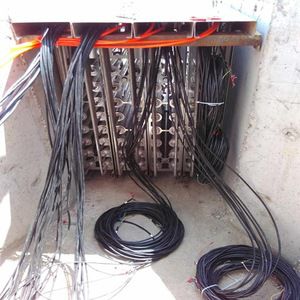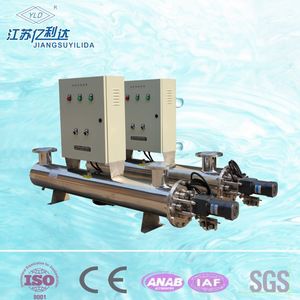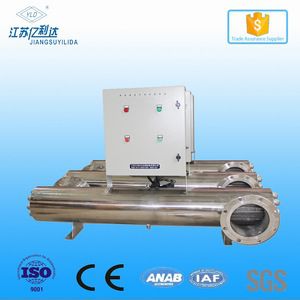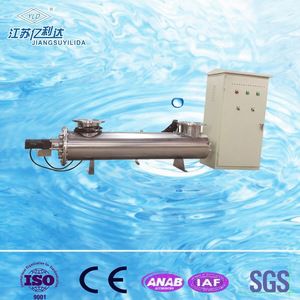UV sterilizers work on the principle that special fluorescent UV lamps can effectively irradiate (kill) microorganisms in aquarium water when they are exposed to this light. UV light, at a peak wavelength of approximately 254 nanometers, alters the genetic material in the organism's nucleus and shortens its normal life cycle. Theoretically, UV sterilizers can kill viruses, bacteria, algae, and protozoa with no residual effects. However, the organisms must be free-floating and travel through the UV sterilizer unit for the sterilizer to work. It has no effect on organisms attached to fish or rocks because they do not flow through the unit and cannot be exposed to the UV light, pretreatment may need be added to the water system. Prefiltration is required to remove color, turbidity, and particles that shield microorganisms from the UV source. Water that contains high mineral levels can coat the lamp sleeve and reduce the treatment effectiveness. Therefore, pretreatment with a water softener or phosphate injection system may be necessary to prevent build-up of minerals on the lamp.

Limitation of Use
The UV water disinfection system NOT intended for the treatment of water that has an obvious contamination or intentional source, such as raw sewage, nor is the unit intended to convert waste water to microbiologically safe drinking water.

Water Quality(in)
Water quality plays a major role in the transmission of germicidal UV rays. It is recommended that the water does not exceed following maximum concentration levels.
Maximum Concentration Levels (Very Important)
Total iron content | Less than 0.3ppm(0.3mg/L) |
H2S | Less than 0.05ppm(0.05mg/L) |
Total suspended matter | Less than 10 mg/L |
Manganese content | Less than 0.05 mg/L |
Water hardness | Less than 120 mg/L |
Chroma | Less than 15 |
Water Temp. | 5-60Centigrade |
PH value | 6.5-8 |
Technical parameter
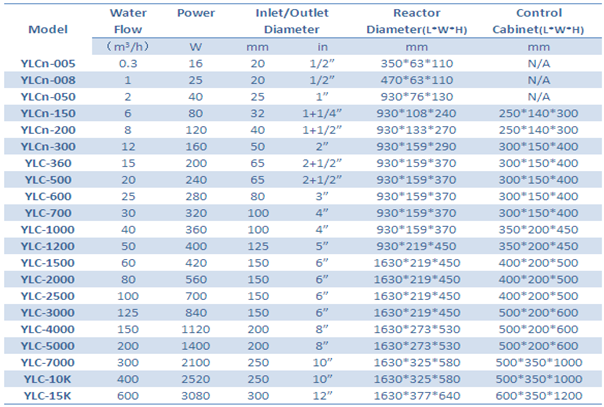
Advantages
1. High efficient sterilization: normally kill 99%-99.9% bacteria within 1 to 2 seconds.
2. Broad spectrum: UV rays has the broadest spectrum, killing almost all bacteria and virus.
3. No secondary pollution: don’t add any chemical agent, it does not create secondary pollution to water and surrounding environment, do not change any ingredients in water.
4. Safe and reliable to operate: traditional disinfection technology such as adopt chloride and ozone, the disinfectants themselves are highly toxic and flammable material. While UV sterilizer has no such potential safety hazard.
5. Low maintenance fee: UV sterilizer occupies a small area (and have a simple structure requirement, so smaller total investment and lower operation cost are easy to achieve).Its cost only half than chlorine disinfection in kiloton water treatment
Application

1.Food processing industry, including juices, milk, drinks, beer, practical oil and canned food.
2.Electronic industry.
3.Hospitals, various laboratory and high levels of pathogenic body water disinfection.
4.Households building, residential, office buildings, hotels, restaurants, water factories.
5.Purification and disinfection of shellfish, fish cleaning and disinfection
6.Military camp, field water supply system
7.Urban wastewater disinfection.
8.Swimming pool, other recreational water disinfection
9.Thermal power, nuclear power plant industrial, central air conditioning system cooling water.
10.Biological, chemical and pharmaceutical, cosmetics for the production of cooling water.
11.Sea water, fresh water breeding, aquaculture water
12.Agricultural water disinfection
1.What is the water flow of your water system?
2.What is your raw water to be disinfected?
3.Do you need the accessories like flow switch,UV intensity detector,timer,etc?
4.Do you also require other kinds of filters together with the UV sterilizer for your water system?
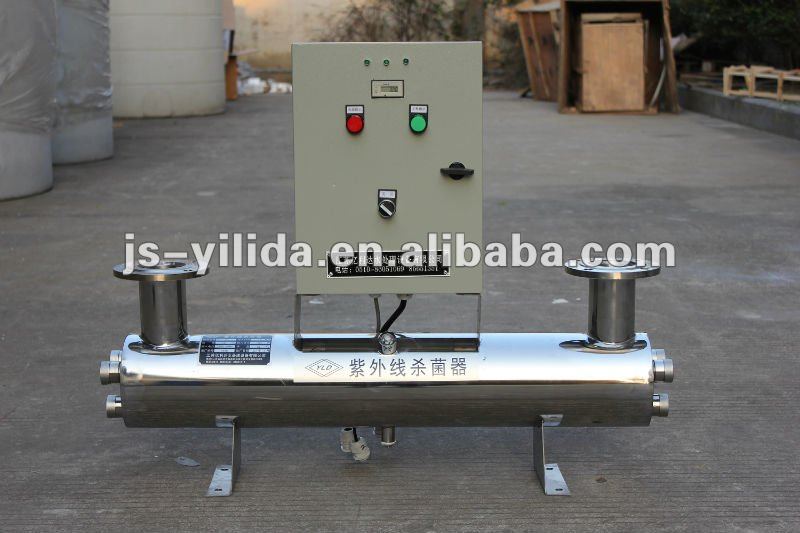
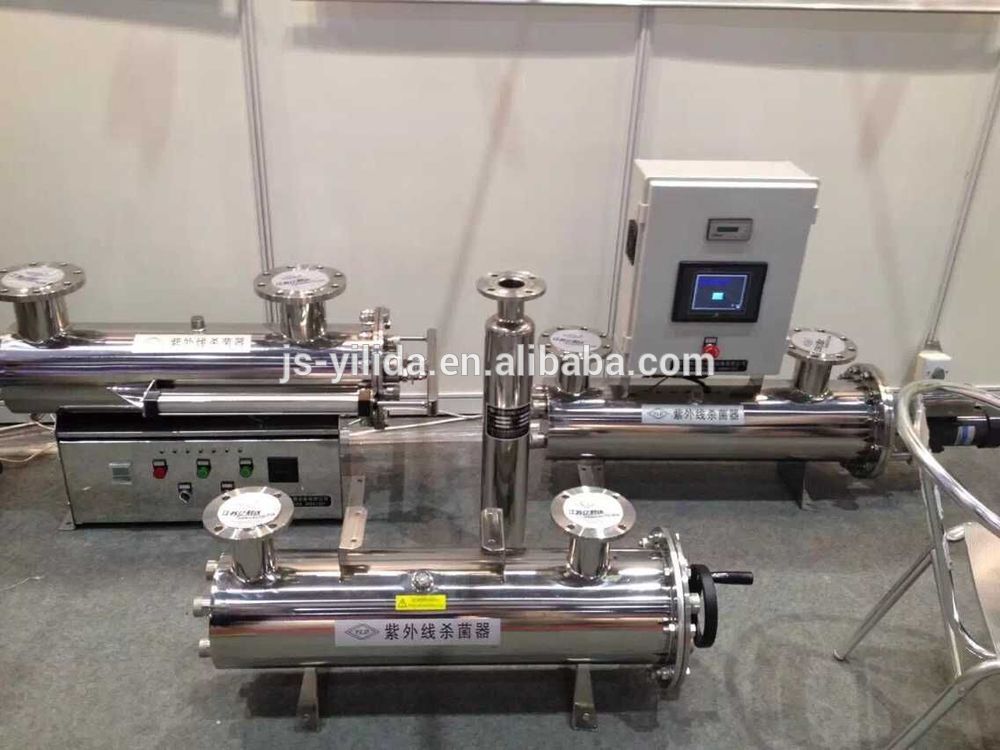

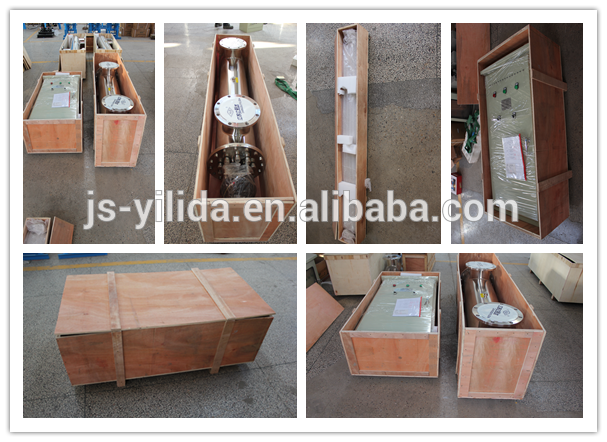

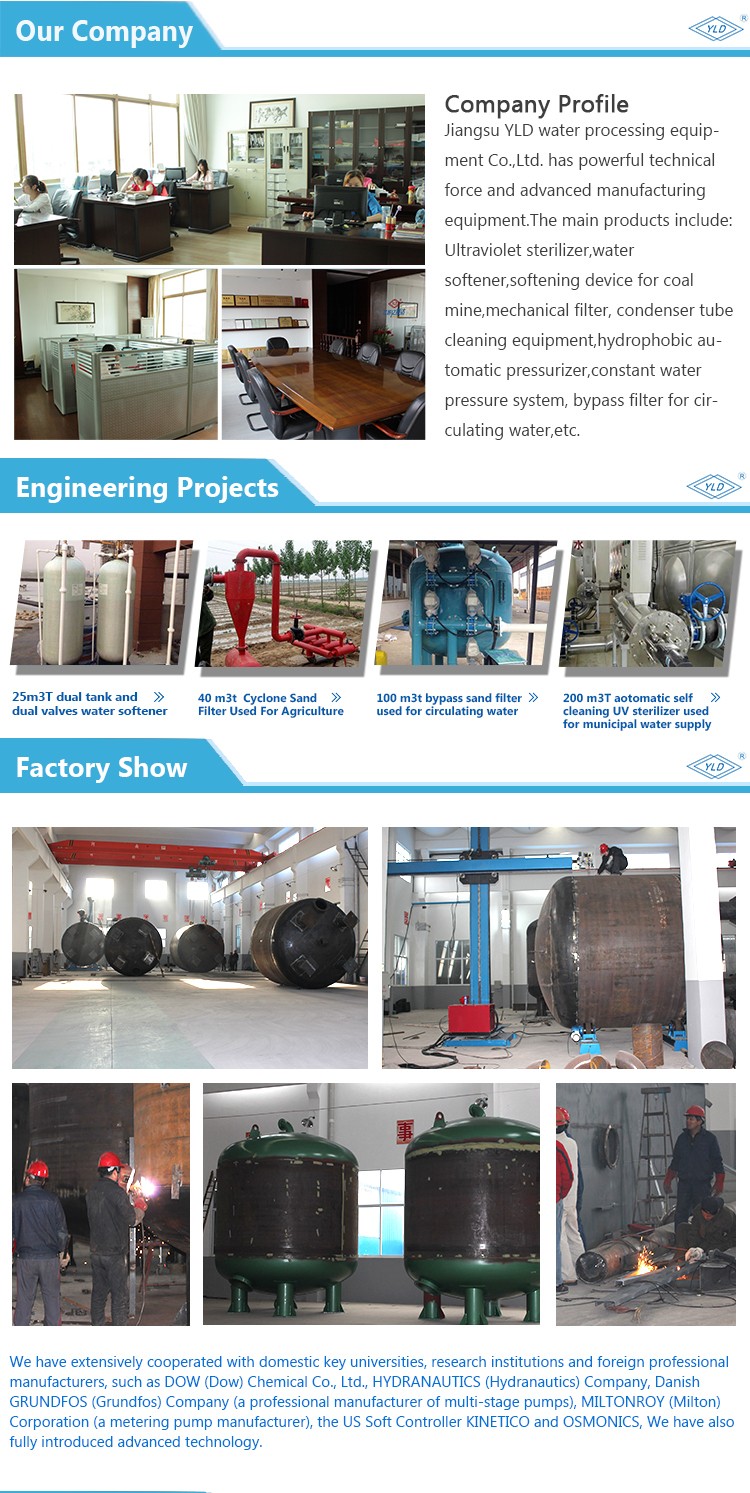




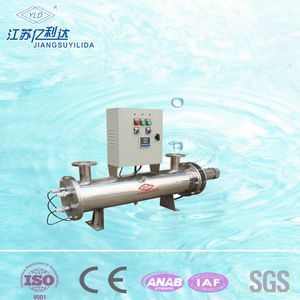



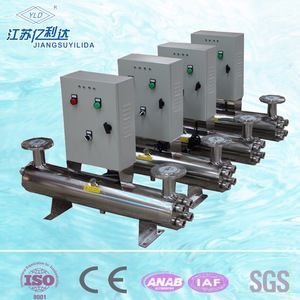
 China
China